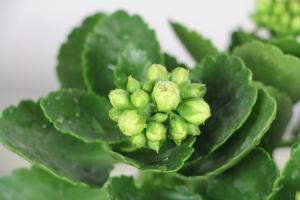How Do You Protect Outdoor Potted Plants from Freezing?
Many gardeners face the challenge of protecting their outdoor potted plants from the freezing temperatures that come with winter. Without proper protection, these plants can suffer significant damage and even die. In this article, we'll discuss various ways to protect your outdoor potted plants from freezing.
1. Bring Them Indoors
One of the simplest ways to protect your outdoor potted plants from freezing is to bring them indoors. If possible, move your plants to a garage, a basement or a spare room that can accommodate their needs. It's important to maintain an appropriate temperature and humidity level for your plants, as well as give them adequate sunlight. Keep them away from any heat sources or radiators that may cause them to dry out.
2. Cover Them with Blankets or Tarps
Covering your outdoor potted plants with blankets or tarps can also provide protection from the freezing temperatures. However, it's important to use breathable materials to avoid trapping moisture, which can lead to fungal diseases. Place stakes or poles around the plants to prevent the covering from weighing down on them. Furthermore, remove the covers during the day to allow proper ventilation and sun exposure.
3. Use Insulation Materials
Using insulation materials such as bubble wrap, foam or cardboard can also help protect your potted plants from freezing. Wrap the pots with the insulation material, making sure to cover the bottom as well. This method can be particularly effective in areas where the temperature drops significantly below freezing. However, be careful not to cover the plants' leaves and branches as they need access to sunlight.
4. Water and Mulch the Soil
To prevent the soil in your potted plants from freezing, water it thoroughly before the first frost. Furthermore, add a layer of mulch on top of the soil to help retain moisture and insulate the roots. This will help prevent the soil from freezing and dehydrating the plant's roots. However, be careful not to overwater your plants, as excess moisture can lead to root rot.
5. Move Them to a Sheltered Location
Moving your outdoor potted plants to a sheltered location such as a porch, a covered patio or under a tree can provide some protection from freezing temperatures. This will help block the wind and provide some warmth to the plants. However, it's important to monitor the plants' condition and adjust their location accordingly depending on the temperature.
Final Thoughts
Protecting your outdoor potted plants from freezing is essential to ensure their survival and health. While there are various methods to protect them, it's important to choose the one that best suits your plants' needs and your environment. By taking the necessary steps, you can enjoy your potted plants year-round without the fear of winter damage.

 how many times do yo...
how many times do yo... how many planted tre...
how many planted tre... how many pine trees ...
how many pine trees ... how many pecan trees...
how many pecan trees... how many plants comp...
how many plants comp... how many plants can ...
how many plants can ... how many plants and ...
how many plants and ... how many pepper plan...
how many pepper plan...































